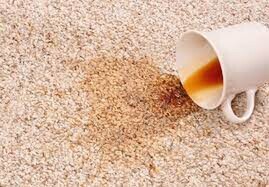Of course in an ideal world, you’d never drop anything on your carpet in the first place, but we’re dealing with real life here. Some substances are relatively easy to remove, others are more challenging. Also included are some tips on the immediate actions you should take if you’re unfortunate enough to spill any of the following on your floor coverings.
According to carpet cleaning professionals, these are the 8 hardest stains to remove from a carpet:
1) Blood
Obviously, your first priority will be to deal with the person who’s bleeding. Once this is done turn your first aid attention to your carpet. Blot up the blood using paper kitchen towels or soft light coloured cloths. Work from the outside of the stain towards the centre. The use COLD water with a little dishwashing liquid added. Never use hot water on blood stains, you’ll just cause them to set.
2) Red wine
As with blood, start by blotting up surface liquid. Then use a mixture of water and white wine vinegar to work from the edge of the stain towards the centre. It’s better to be patient and apply small amounts of your cleaning solution repeatedly than to soak the carpet in one go. Doing the latter could spread the stain and damage the carpet backing.
3) Other coloured drinks
Coloured drinks have a particularly bad reputation among professional carpet cleaners, but any drink with added dyes in it will present a challenge. Your first step should be to treat the liquid as if it was red wine, but you may require the help of an expert who can clean and treat the stain as soon as possible.
4) Coffee
Blot excess liquid then use a water and white vinegar mix to work from the outside of the stain to the centre. Remember to change your cloth frequently so you don’t spread the stain or reintroduce the coffee back into the carpet.
5) Ink
The recommended stain remover for ink is isopropyl alcohol (most nail polish removers are made of this). You should apply this to a cloth first then use the cloth to gently blot the stain. Since the alcohol might damage the carpet or remove dye in it, it’s best to test on an inconspicuous area first. If in doubt call on a professional carpet cleaning company to assess the situation and use specialist products to try and save your carpet.
6) Animal urine
In fact, any urine… but the most common culprit for this problem is generally your not yet trained puppy. One thing to remember about urine is that it’s acidic and if not attended to promptly will bleach colour from your carpet or turn it yellow. Baking soda will absorb the liquid, neutralise the acid and mask any unpleasant odour as well. Blot up excess liquid, apply baking soda leave for 15 minutes then vacuum up.
7) Other bodily fluids
Remove solids like dog mess or vomit using gloves and paper towels or light coloured cleaning cloths, then treat the area as if it was a urine stain. Again, baking soda will absorb and neutralise unpleasant odours. You may need to follow up your immediate cleaning with a professional cleansing of the whole carpet, to remove any lingering offending substances,
8) Cooking oil
Few of us are brave enough to have carpets in the kitchen but oil from a cruet set can get spilled on a carpet and is very difficult to remove. You’ll need an enzyme-based cleaner to remove oil and possibly a steam or hot water extraction process too.
Golden Rules of Carpet Stain Removal
• Act fast – The longer the substance is on the carpet the more it will soak into the fibres and the harder it is to remove
• Test cleaning products – In an inconspicuous area before applying them to a carpet stain in the centre of your room
• Blot don’t scrub – Scrubbing just forces the stain deeper into the carpet
• If in doubt – Call a professional carpet cleaning company, they’ll advise you on any immediate action you should take.
And Finally…
Your chances of totally removing a stain depend as much on what kind of carpet you have as on what was spilled on it. Not every stain can be totally removed from every carpet, but with the prompt correct action, it’s always possible to greatly reduce the damage and often it is possible to prevent permanent discolouration.


